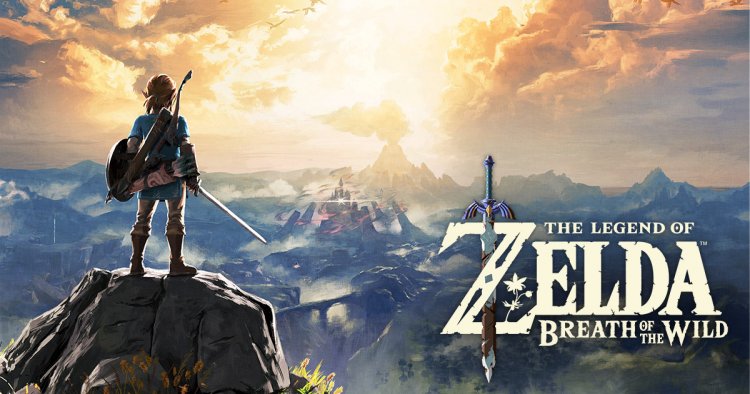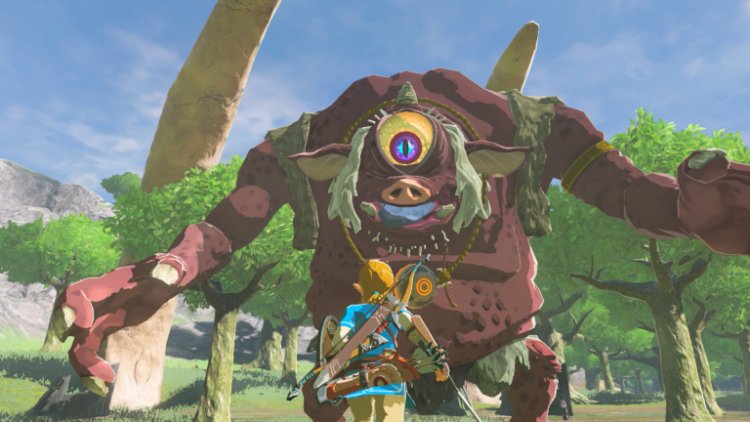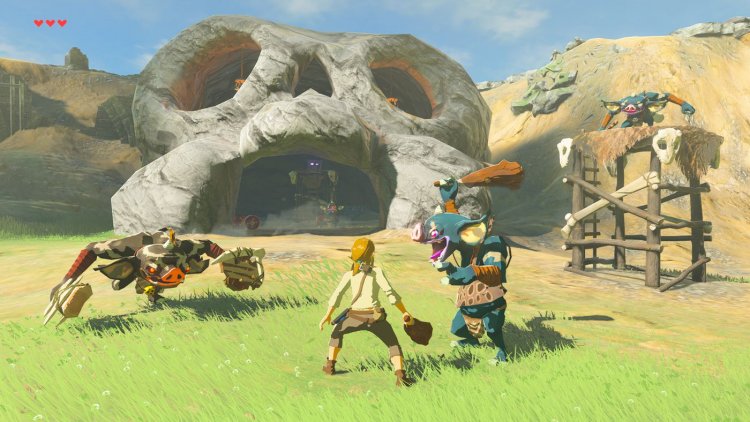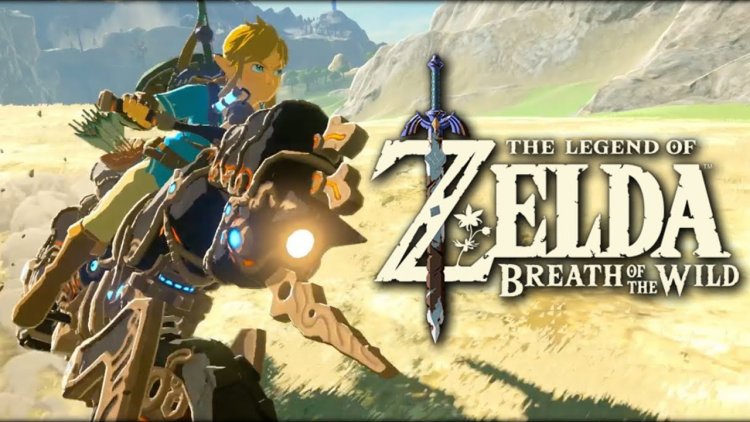The Legend of Zelda: Breath of the Wild Review
The Legend of Zelda: Breath of the Wild full review here.

The Legend of Zelda: Breath of the Wild is an exceptional video game. To all intents and purposes, the game is flawless. It offers an enticing blend of open-world adventuring, tight and mechanically slick combat, and a wonderful real sense of time and place, which few games achieve. It is a compilation of decades' worth of the best bits from previous TheLegend of Zelda titles, and it is an ESSENTIAL purchase if you own a Nintendo Switch OLED, a Nintendo Switch, a Nintendo Switch Lite - or even a Wii U.
But you and everyone else who knows anything about video games already knew that, right? The key reasons why are as follows.
Before we get into the review proper, why not watch The Legend of Zelda: Breath of the Wild's epic launch trailer, which not only sets the scene and provides a basic introduction to the game's plot and characters but also demonstrates one of the game's key strengths, it's massive and beautifully realized open world.
Also Read: TheLegend of Zelda: Breath of the Wild 2 Release Date, Trailers, News, and More
Breath of the Wild Review
EXPLORATION AND ADVENTURE
Indeed, if there is one thing that The Legend of Zelda: Breath of the Wild excels at, it is its wondrous and expansive open world. Past TheLegend of Zelda games have always had a degree of open world, with players typically using a central map world hub to unlock and then reach game-progressing dungeons, but Nintendo has completely transformed this in 2017.
Think more The Witcher 3: Wild Hunt and less about TheLegend of Zelda: Twilight Princess for an idea of the size of The Legend of Zelda: Breath of the Wild's map. The world Link awakens to in Breath of the Wild is massive, with seemingly endless vistas in almost every direction. The landscape changes and varies dramatically, with snowy tundras and icy peaks giving way to lush jungle forests, windswept heath lands, brutally hot and barren deserts, and even tropical ocean-lined beaches in the world's edge.
Needless to say, getting anywhere on foot in TheLegend of Zelda: Breath of the Wild takes a LONG time, let alone getting from one side of the map to the other. As a result, Nintendo wisely provides the player with two extremely useful tools to aid their adventure: a glider and - once captured and tamed in the wild - a horse.
Combine this with Link's ability to climb almost any surface, including vertical cliffs (more on this later, as it is dependent on stamina), and TheLegend of Zelda: Breath of the Wild is filled with moments where you see a place and, almost magically, can make your way there, no matter how inaccessible it appears at first.
In Breath of the Wild, there are no invisible barriers preventing you from climbing Hyrule's tallest mountains, which are unique challenges in their own right, and no strict funnelling by the programmers. You can go wherever you want, depending on your skill level, which is extremely liberating.
Also Read: GTA 6: Release Date Leaks, and Storyline, Trailer, Maps,...
COMBAT AND CHARACTERS

And survival in The Legend of Zelda: Breath of the Wild will require skill. The game isn't incredibly difficult or unfair; in fact, its combat mechanics are typical Zelda tight and refined; however, you'll have to get used to Link taking a lot of damage from almost every hit. It may appear harsh at first, with the odd blow from an enemy creeping through your rusty defences, but once you get into the rhythm of the game's combat and, more importantly, start using your weapons and items correctly, it all seems incredibly fair and well balanced.
Weapons come in a wide range of types, styles, and power, but almost every weapon is degradable after use. Consider the Giant's Knife from The Legend of Zelda: Ocarina of Time, which would break after a certain number of blows and would need to be repaired again for full-power use. As a result, weapon and inventory management (you can only carry a certain number of weapons, shields, and bows at once; this can be upgraded and expanded) is critical to success in TheLegend of Zelda: Breath of the Wild's combat, as you must react to enemies by identifying and exploiting their weaknesses.
Weapons can be obtained by defeating enemies - if you knock one down, forcing it to drop its weapon, you can pick it up before they do, disarming them - found in the game world, received from NPCs, purchased from merchants, or gifted by defeating difficult bosses and dungeons. Weapons can be either handheld (such as swords, spears, and axes) or ranged (such as bows), with most weapons being directly throwable by Link as an alternate attack. Obviously, unless you're using a boomerang, you'll have to go pick up the weapon if it's thrown.
Naturally, TheLegend of Zelda: Breath of the Wild's Hyrule is jam-packed with unique and, at times, bizarre characters for you to discover, with many nods to previous titles included for the long-term fan. The aquatic Zora, the rock-loving Goron, and the stealthy, sand-dwelling Gerudo are all present, as are their distinct habitats and cultures.
Also Read: WWE 2K22 (PC) Review
MECHANICS AND MAGIC

Despite its vast open world, The Legend of Zelda: Breath of the Wild plays remarkably similarly to previous Zelda titles. There are core - story-advancing - "dungeons" to conquer in the form of the game's Divine Beasts, which typically grant Link new powers, weapons, and items to help him defeat the game's big bad (good old Ganon returns again), as well as a dump truck load of well-crafted side quests, collectibles, and puzzles that can be taken up optionally if desired.
The Legend of Zelda: Breath of the Wild, on the other hand, adds two new-ish mechanics to the game: shrines and Shiekah Towers. Shiekah Towers are large, climbable towers that can be found throughout Hyrule's various lands. When climbed by Link and activated via a top-mounted pedestal, the region on the player's map lights up and illuminates. The mechanic works exactly like climbing synchronisation points in the Assassin's Creed series, even going so far as to reward the player with a 360-degree panning shot once activated.
The other, more significant, introduction is the presence of 100 shrines scattered throughout the game world. These serve as micro-dungeons, typically lasting 5-15 minutes and presenting the player with a variety of challenges ranging from physics-based puzzles to outright combat. By successfully completing these shrines, the player is rewarded with a spirit orb, which, once four are collected, can be exchanged for an extra heart in Link's health bar or an extra segment in his stamina bar.
And, in our opinion, the stamina bar should be improved first because it determines how long Link can climb and fly with his glider. Doesn't sound like much, does it? Wrong! As we mentioned at the start of this review, exploration is crucial to progressing in this game - after all, you have to find Link's Master Sword rather than having it handed to you - and exploration is greatly aided by climbing and flying.
Indeed, with a big fat extended stamina bar, Link can easily climb Sheikah Towers, revealing more of the map's locations of interest, or can glide for miles surveying the world's most difficult locations for a good place to attack and win the day.
Also Read: Elden Ring Release Date, Price, Gameplay, Review, and System...
TRIALS AND TITANS

While the game's 100 shrines are designed for short bursts of lateral thinking and control mastery, with Link's various powers such as Stasis (the ability to halt time's flow on certain objects; check out the halting of the stone ball in the above picture), where the game slips more back into The Legend of Zelda's traditional longer-form dungeons is with the game's plot-critical Divine Beasts, huge titan-like machines that while once created
Mechanically, these Divine Beasts are divided into three stages: getting onto the beast, regaining control of it inside by activating a series of terminals, and a final stage where Link must face off against a boss character. While each Divine Beast is unique, this basic structure remains, requiring the player to overcome movement, combat, and mental challenges in order to progress and free the beast from Ganon's control. Once the Divine Beast is freed, Link is not only granted new powers and items to help him defeat Ganon, but the Divine Beast itself adds power to the final fight, making the game easier.
Interestingly, while 91 did not attempt it, Nintendo claims that the player can go face Ganon whenever they want, without having to free any of the Divine Beasts or even fully exploring the game world and powering up. While the vast majority of players will never attempt it, it is really cool that TheLegend of Zelda: Breath of the Wild is programmed in this way, as it empowers the player to an even greater extent to play the game their way - no doubt the Zelda speed run community will absolutely adore it.
Indeed, the feature highlights another of The Legend of Zelda: Breath of the Wild's major strengths: the player is free to not only complete Nintendo-created challenges, but also create their own on the fly. While a path leading up to a Sheikah Tower may be lined with enemies that must be defeated, perhaps the player could use parts of the landscape, their mastery of cookery (which allows you to create food and stat-buffing elixirs), and specific items to reach the top without engaging in any combat at all.
Also Read: Red Dead Redemption 2 Release Date, Price, Storyline, Gameplay,...
LORE AND LEGEND

The Legend of Zelda: Breath of the Wild's art is not only consistent with previous titles, but also absolutely stunning. The world of Hyrule has never been more fully realised, with the game's bright cell-shaded graphics, vibrant character, location, and object designs, as well as a beautiful musical score and ambient sound effects, creating a fantastic sense of place.
The views are simply breathtaking when the wind blows and grasses rustle and sway in the breeze, when rain and lighting sweep through the landscape and Link is transformed by the downpour soaking everything though, and when the sun rises above Hyrule Castle, illuminating the Studio Ghibli-style flora and fauna.
This wonderful sense of in-game place is accompanied by a very clear sense of in-game time. Throughout the game, various NPCs introduce the player to the game's story, retelling an epic tale that began 100 years ago and is laced with sadness and regret. This story adds genuine gravitas to the events of the present and, at times, is genuinely mature in its tone. Tears are shed, uncertainty is revealed, and despite the colourful and vibrant world Link explores, The Legend of Zelda: Breath of the Wild is pervaded by a this-is-the-last-roll-of-the-dice darkness.
Indeed, the game communicates that the story you're enacting is not only eternal, part of the never-ending flux between yin and yang, light and dark, and good and evil, but also truly legendary. The actions of the Hero of Time have passed into legend in the same way that King Arthur's pulling of the sword from the stone has.
Also Read: Destiny 2: The Witch Queen Release Date, Storyline, Gameplay,...
SWORD AND STONE

This brings us to the conclusion and the all-important question of where this game ranks in the pantheon of The Legend of Zelda games. Is Breath of the Wild becoming its own legend?
For many gamers, the first game in a series that they play is often their favorite, a phenomenon wrapped up in the golden days of childhood and, now, huge swaths of nostalgia for simpler, more innocent times, we believe that despite finding TheLegend of Zelda: Breath of the Wild an incredibly enjoyable, impressive, and playable game, the call of classics such as TheLegend of Zelda: Ocarina of Time will prove too much, finding Breath of
However, we believe that The Legend of Zelda: Breath of the Wild is, by far, the best TheLegend of Zelda game ever made, based on the most objective perspective we could muster here at 91 Towers - and trust us, when you've played titles like TheLegend of Zelda: A Link to the Past during your formative years, that is an incredibly difficult thing to do. Furthermore, for those for whom Breath of the Wild will be their first introduction to the wonderful world of Hyrule, Zelda, and Link, it will absolutely blow their minds.

 Mike2051
Mike2051 








